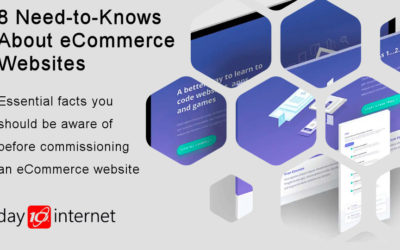 I’m often asked by clients in the retail business how much it would cost to add an online shopping facility to their websites. The answer is not as simple as it appears at first site. If you don’t go about it correctly you could be pouring money down the drain.
I’m often asked by clients in the retail business how much it would cost to add an online shopping facility to their websites. The answer is not as simple as it appears at first site. If you don’t go about it correctly you could be pouring money down the drain.
Yes of course I can add an online eCommerce system complete with shopping cart, payment gateway, stock control and the whole nine yards that goes with such a system. But it will cost and it is not just the cost of adding the software to the site. Many of the costs are offline costs related to managing the online side of the business.
So below are some of the pitfalls and things to consider when setting up and running an online business…..
- Setting up a shopping cart framework is relatively easy and inexpensive. Open source eCommerce systems, such as Joomla, are free to use. The only cost involved is in the set up and integration with your site.
- The bulk of the effort or cost occurs in setting up the products. When you consider that, for each product, you need a description, images, pricing details, and variant details such as colour, size etc. Each of these has to be input to the administrator’s part of the site. Time and costs can add up significantly.
- Finding and formatting the images can be time consuming. You may have to have products photographed yourself. Even if you can get hold of images from suppliers for example, you will almost always have to format them, using software such as Photoshop or Paintshop Pro, to suit the shopping cart.
- Once you have set up your shop that is just the start. You need to consider how you are going to handle orders. This will involve receiving orders, fulfilling them and updating the website to show the current state of the orders. Remember that, these days, when people order online they expect a fast turnaround. This means that you will have to process orders on a daily basis. You may have to hire additional staff to do this.
- Stock control is something you will need to watch carefully. Most eCommerce systems have facilities to automatically manage stock. This is fine if all your business is online. But if you are also selling products off-line then any products you sell this way will not be reflected in your eCommerce system. You will need to take account of this.
- Then you are going to have to deal with customer queries and complaints. Depending on your type of business this could be significant. Many online retailers don’t give out phone numbers but only cater for queries and complaints by email for this reason. I would not recommend this route because you will quickly get a reputation for poor service if you do.
- Depending on your type of business you may decide to go for the drop ship model. This is where you take orders, pass them on directly to your wholesalers who ship directly to your customers. This may seem like a way of reducing your overheads. It can be deceptive however. Whilst your won’t have to worry about the logistics of fulfilling orders and shipping etc, you will still have to field queries and complaints. The effort required to do this could be significantly higher that if you ship to customers directly yourself, because you are essentially acting as an intermediary between your customers and the wholesalers whose activities are out of your direct control.
- You will need to manage your overheads carefully. Online shopping is an extremely competitive business. People who shop online are very price conscious. So, unless you are selling premium or niche products, then your margins are going to be cut to the bone in order for you to compete.
So given these potential pitfalls, what is my advice if you want to start selling online.
- Start small. You can set up a small PayPal online shop for a very modest outlay.
- Experiment by selling a few of your best products first and see how this goes.
- Then gradually increase the number of products.
- When your online business is starting to take off then this is the time to upgrade to a full-blown eCommerce system
- By this time you will have begun to gain an understanding of the kind of effort that will be required to manage online retailing and you will be able to plan changes to your business to handle a full blown online store.
- Just bear in mind that online retaining is not something that you should do as a sideline to your off-line business. It requires careful planning and investment in order to do it right and make a profit.
Good luck and make sure you don’t pour your money down the drain.





